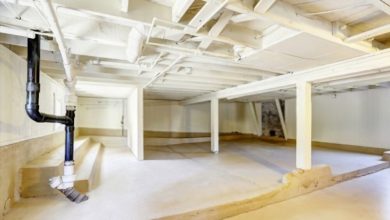What Keeps Mold from Coming Back on Vinyl Siding in Indiana?

How Can You Prevent Mold on Vinyl Siding in Indiana?
Mold growth on vinyl siding is a common issue for homeowners, especially in Indiana, where humid summers and frequent rain create an ideal environment for mold. Not only can mold damage the appearance of your home, but it can also pose health risks and potentially compromise your home’s structural integrity. To maintain the longevity and cleanliness of your home, it’s essential to understand how to prevent mold from recurring on vinyl siding in Indiana.
Understanding Mold Growth on Vinyl Siding
Mold thrives in warm, moist environments, and Indiana’s weather often provides these perfect conditions. While vinyl siding itself is moisture-resistant, problems arise when moisture becomes trapped behind the siding or when dirt and organic debris accumulate, feeding mold spores.
Key Factors Contributing to Mold Growth:
- High Humidity: Indiana’s humid climate during summer accelerates mold development.
- Lack of Sunlight: Shaded areas of your home’s exterior are more prone to mold as they retain moisture longer.
- Poor Ventilation: Insufficient airflow can increase moisture retention, encouraging mold growth.
Preventative Measures to Keep Mold at Bay
Regular Cleaning
Routine cleaning is one of the best ways to keep mold off your vinyl siding. Consider the following cleaning practices:
- Gentle Washing: Mix 70% water with 30% white vinegar to create an effective cleaning solution for removing mold and mildew. Apply it using a soft brush or cloth to avoid damaging the siding.
- Annual Deep Cleaning: Use a power washer on a low-pressure setting once a year to remove stubborn grime and mold. Be cautious not to let water seep behind the siding, as this could cause further moisture issues.
Improve Ventilation
Ensuring proper ventilation around and behind your siding can significantly reduce moisture buildup. Install or enhance venting systems in your attic and crawl spaces to allow air to circulate and keep these areas dry. Consulting a professional for ventilation improvements is often a good investment.
Trim Vegetation
Overhanging trees, shrubs, and other vegetation near your home can create shaded, damp environments perfect for mold growth. Trim these back to allow sunlight to reach your siding, helping it stay dry and mold-free.
Use Mold-Resistant Products
When installing or replacing siding, choose mold-resistant vinyl siding products. These are specially treated to deter mold and are an excellent investment for areas with high humidity.
Conduct Regular Inspections
Frequently inspect your vinyl siding for signs of mold or excessive moisture. Pay close attention to seams and edges, where water is more likely to collect. Catching mold early can prevent a small issue from escalating into a larger, costlier problem.
Repair Leaks Promptly
Leaks from roofs, gutters, or windows can lead to mold growth on siding. Address any leaks promptly to minimize water exposure and protect your home from moisture-related issues.
Conclusion
Keeping mold from coming back on vinyl siding in Indiana requires a proactive approach. Regular cleaning, proper ventilation, trimming nearby vegetation, and investing in mold-resistant materials are crucial steps. Additionally, routine inspections and prompt repairs of any leaks can help maintain the appearance and integrity of your siding.
By implementing these preventative measures, homeowners can protect their vinyl siding from mold and enjoy a clean, healthy, and visually appealing home environment. With consistent care and attention, your siding can remain a durable and attractive barrier against the elements for years to come.





